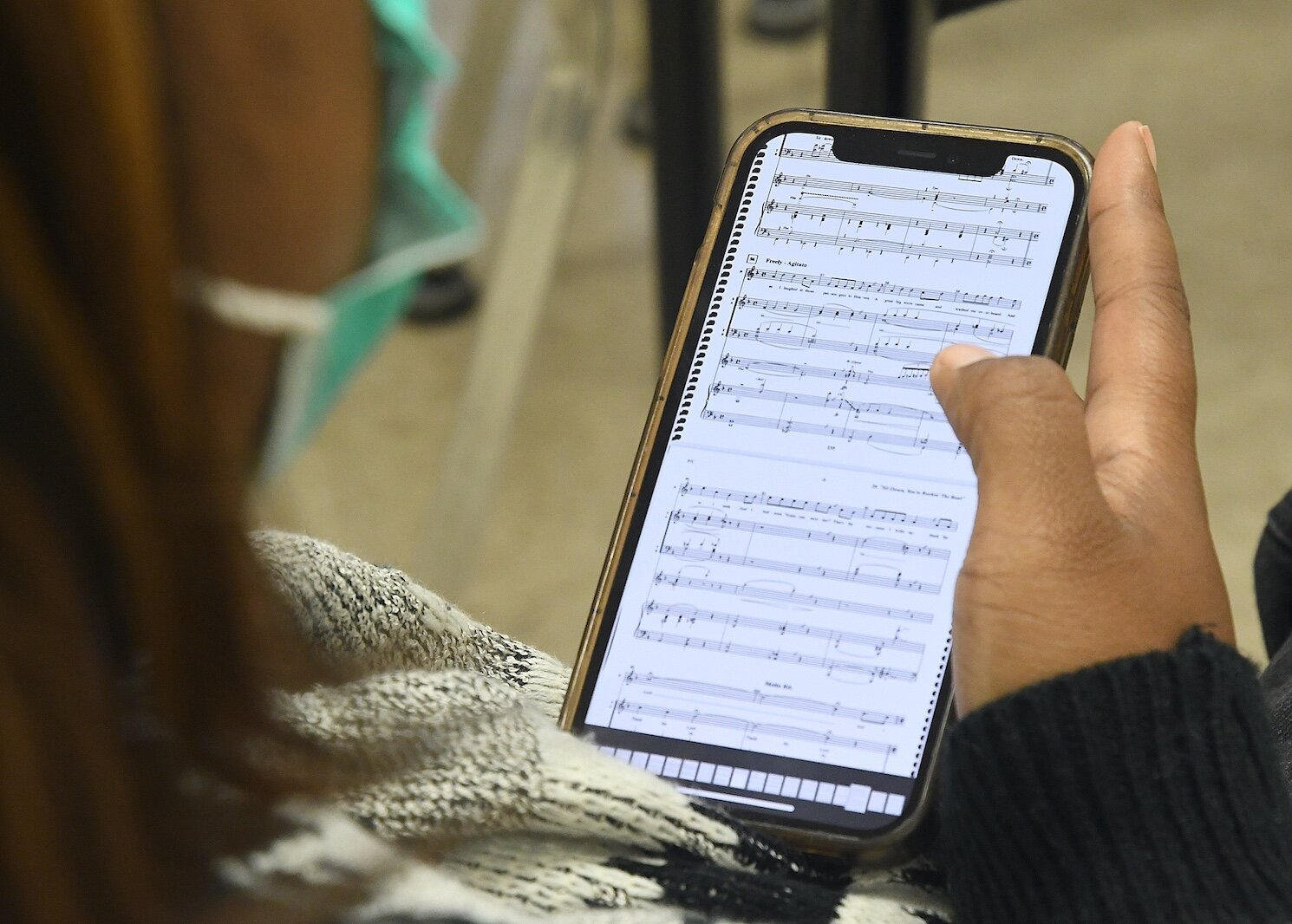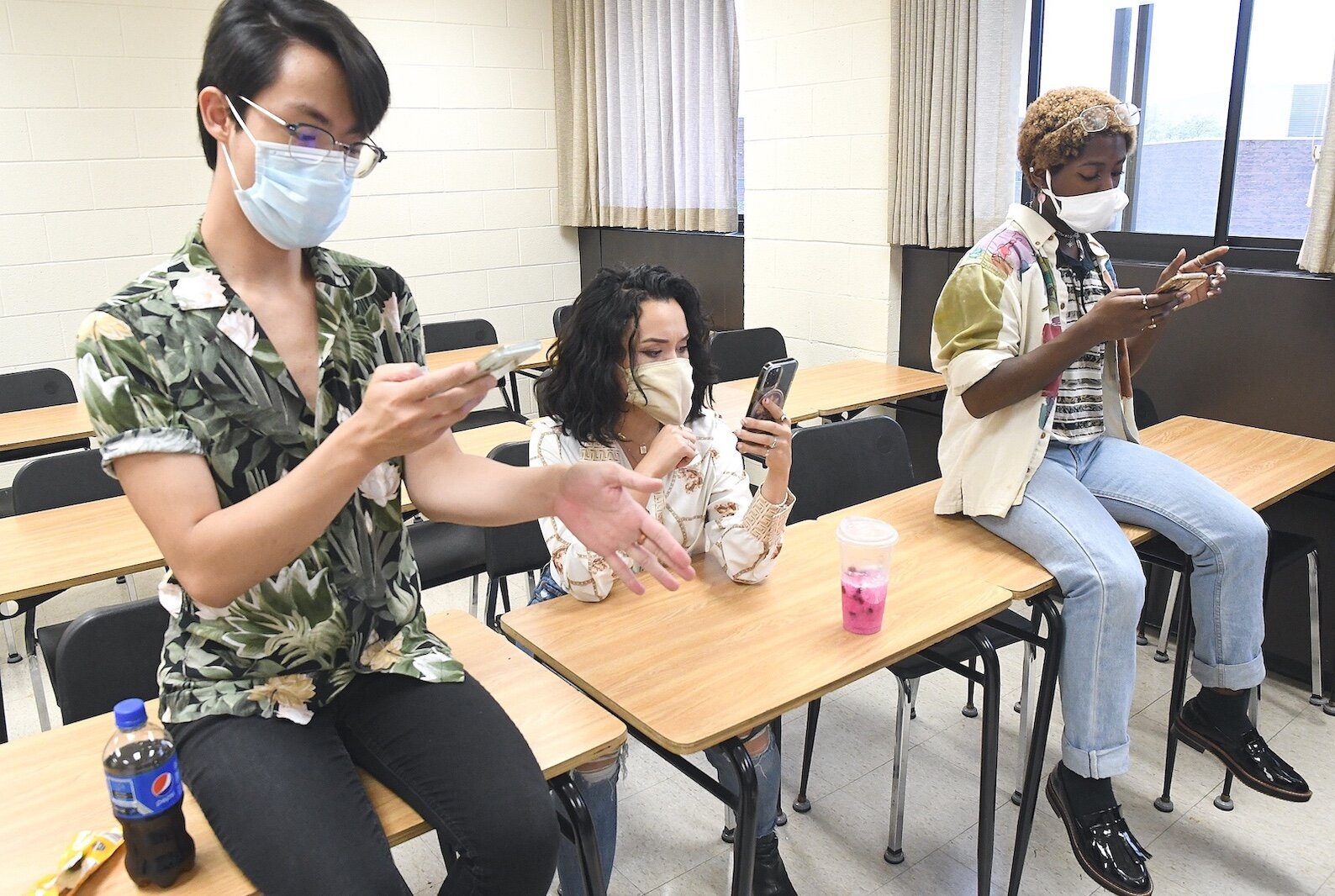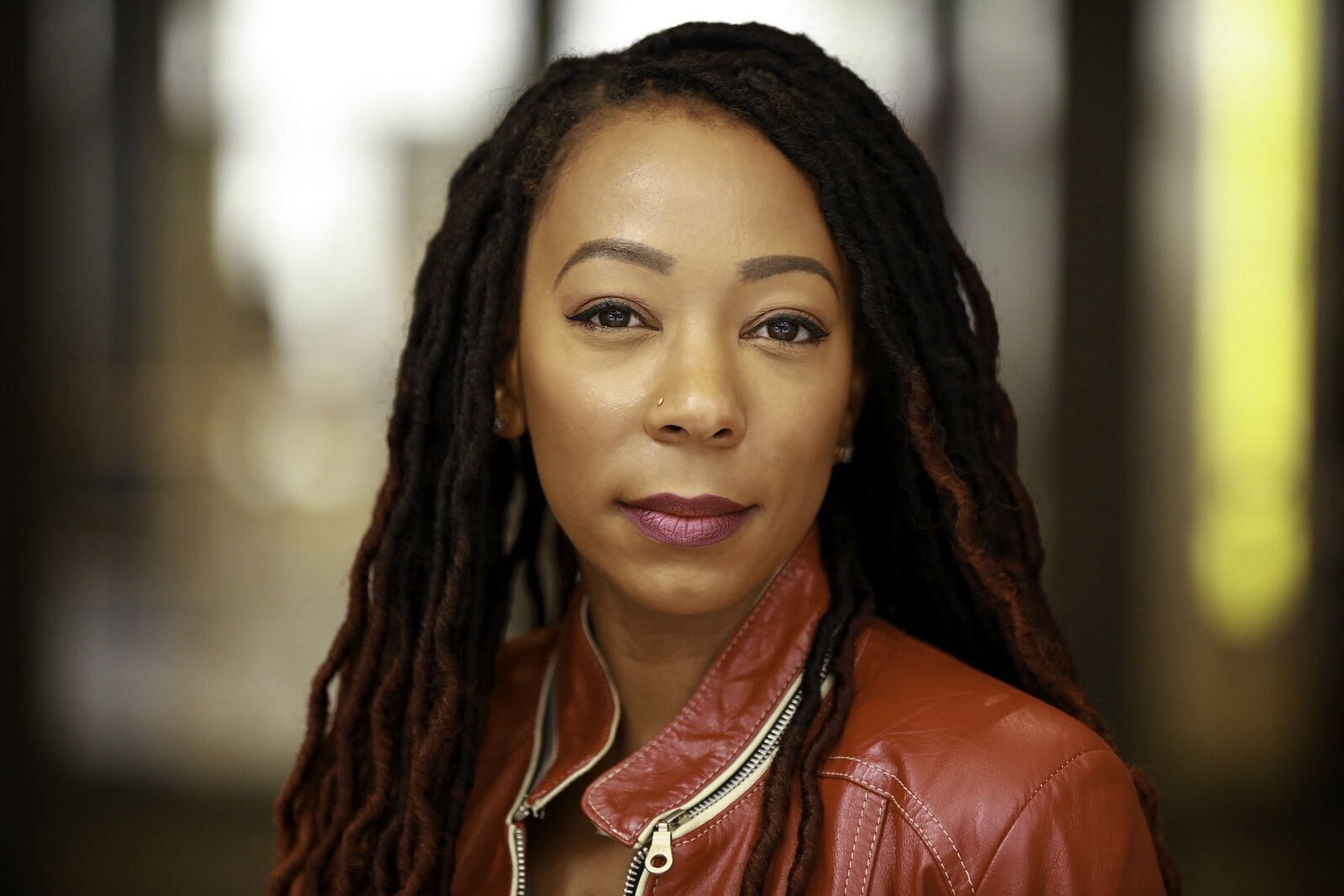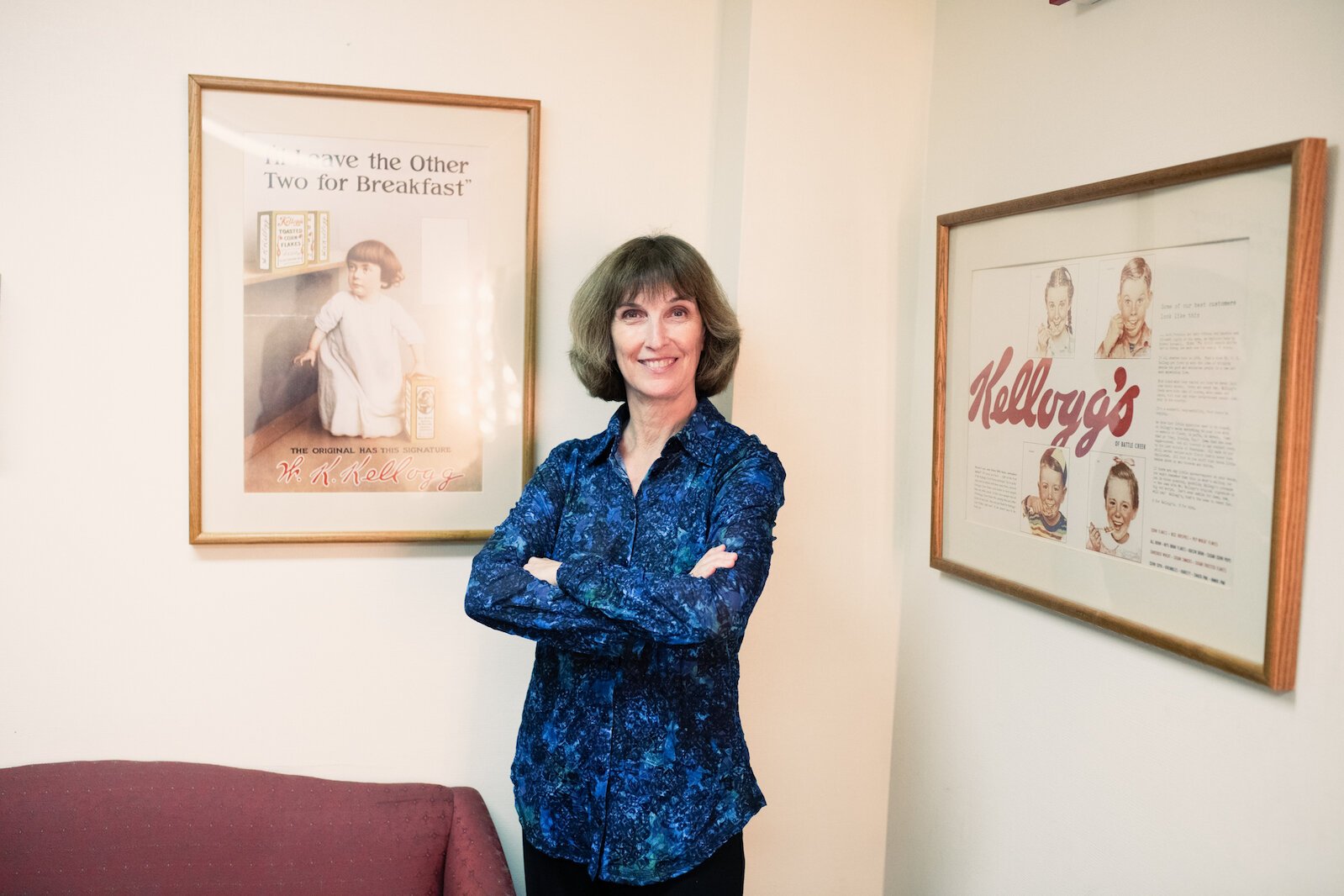The premiere of a locally staged concert version of the musical “Guys and Dolls” will be in color.
The color in this production, to be presented on Nov. 6 by the Battle Creek Symphony Orchestra, will be provided by a cast of artists who identify as people of color, says Maestra Anne Harrigan. She says this is a departure from the original production that debuted in 1950 with an all-white cast and Harrigan says it’s long overdue.
“This concept has been eight years in the making,” Harrigan says. “When I started talking about this, I looked up ‘Guys and Dolls’ and did a Google search and there was one artist of color in a white cast. I thought about doing it the other way around. What you’ll see in this production are two white artists with the rest of the cast being artists of color. It is a diverse cast that will include some white casting.”
The show’s 14 guest artists will all be of diverse backgrounds, this includes Savannah Fisher, a recent graduate of Western Michigan University’s Music Theatre Program, who plays the lead female role of Sarah Brown, and Damon McToy, who plays the lead male role of Sky Masterson. Harrigan says Ed Walker, Director of WMU’s Music Theatre Vocal Pedagogy, was involved in identifying and recruiting the production’s ensemble cast.
Walker already had a personal connection to Fisher, who had taken private voice lessons with him while she was a student at WMU. He says Fisher’s wide-ranging vocal abilities were known to Harrigan and board members after she performed for them before their board meeting at the Music Center.
 Kalyse Connor and other Western Michigan University students rehearse for an upcoming performance of “Guys and Dolls” with the Battle Creek Symphony Orchestra.“They knew her at the Music Center and loved her,” Walker says. “Two years ago, she graduated and we did a senior showcase in New York City where each student gets about one and a half minutes to showcase their talent in front of casting directors and agents with the goal of getting them signed to agent representation. She was immediately snapped up and is in New York working with this agency and auditioning.
Kalyse Connor and other Western Michigan University students rehearse for an upcoming performance of “Guys and Dolls” with the Battle Creek Symphony Orchestra.“They knew her at the Music Center and loved her,” Walker says. “Two years ago, she graduated and we did a senior showcase in New York City where each student gets about one and a half minutes to showcase their talent in front of casting directors and agents with the goal of getting them signed to agent representation. She was immediately snapped up and is in New York working with this agency and auditioning.
Walker says Fisher’s local connection makes the “Guys and Dolls” production “that much more meaningful.
But, Fisher isn’t the only cast member with a local connection. Altamiece Cooper, who plays the role of Nicely-Nicely Johnson, grew up in Battle Creek and is also a graduate of WMU’s Music Theatre Program who now lives and works in New York; Gerald Case-Blanchard, who plays the role of Arvide Abernathy, is Director of Vocal Music at Kellogg Community College; and Jeff Cachero, who plays Rusty Charlie, is the Lakeview Middle School Choir Director.
On their own, each of the cast members are accomplished artists with impressive performance credentials and their coming together for the “Guys and Dolls” production prompts Harrigan to say, “That’s a lot of talent.”
But, this rich diversity of talent may never have made it onto the stage at Kellogg Auditorium were it not for conversations that Harrigan had several years ago while driving through Montana with actors of color. In addition to her conductor duties with the BCSO, she also conducts the Billings (Montana) Symphony Orchestra where she staged a program called “Motown” and brought in “a couple of really talented actors” who had performed in “Motown the Musical.”
“I can remember driving around Montana doing outreach and talking about what are the other projects we could do together and at a certain point we were only talking about musicals with Black people playing Black people,” Harrigan says. “I asked these actors what they really wanted to do and one of them said she wanted to play the role of Laurey Williams in ‘Oklahoma’, but she couldn’t get auditions, much less get hired for that role.”
Like “Guys and Dolls”, “Oklahoma” which opened on Broadway in 1943 had an overwhelmingly white cast, including the female lead role of Laurey Williams.
 Western Michigan University students rehearsing for an upcoming performance of “Guys and Dolls” with the Battle Creek Symphony Orchestra are, from left, Henry Lee, Isabella Abuan, and Travon Moore.Musicals and other theatrical productions that debuted in the early to mid-1900s, known as the “Golden Age of Musicals” were written for predominantly white casts, Harrigan says. After her discussion with the Black actor who wanted an opportunity to audition for the Laurey Williams role and others like her who also felt like they weren’t being given a fair shot, Harrigan says she reached out to every actor of color she knew.
Western Michigan University students rehearsing for an upcoming performance of “Guys and Dolls” with the Battle Creek Symphony Orchestra are, from left, Henry Lee, Isabella Abuan, and Travon Moore.Musicals and other theatrical productions that debuted in the early to mid-1900s, known as the “Golden Age of Musicals” were written for predominantly white casts, Harrigan says. After her discussion with the Black actor who wanted an opportunity to audition for the Laurey Williams role and others like her who also felt like they weren’t being given a fair shot, Harrigan says she reached out to every actor of color she knew.
“It was a long list and I asked them to throw out the names of musicals that they thought they’d be interested in. “Guys and Dolls” was high on that list and so was ‘Oklahoma’, Harrigan says. “But, one person gave me a list of Black musicals and wrote back saying that there were no roles in other musicals for a ‘Black person like me.’ I thought that was awful, that Black actors were self-censoring. It saddened me that society had forced the actors I have spoken with to just give up. I felt like it was a missed opportunity for the organization and the casting directors because every person I reached out to is a very highly qualified individual.”
To have entire sectors of the acting community not be considered for roles in these foundational musicals and the theater experience they offer is harmful, Walker says.
“To have an actor of color say that they would never be considered for a role in these productions was really telling. A very significant portion of the actor community feels like these roles are closed off to them,” he says.
While this came as a shock to her, Harrigan says, “If you look at what’s happening on Broadway, you wonder why it’s taking so long to have people of color in roles originally written for white actors. It takes allies to make the changes. All I know is that we all have a responsibility to move the bar.”
Not as liberal and open-minded as you think
“Most participants in this industry think of it as being very creative and liberal and they’re proud of that sense of self which makes it even more difficult for people to consider the possibility that they may not be as inclusive or liberal as they thought as demonstrated by the outcomes,” says Bliss Griffin, National Diversity and Inclusion Strategist for Actors’ Equity in New York.
Griffin became friends with Walker while she was studying acting at the University of Miami and he was teaching Vocal Performance. She would go on to have a successful acting career but ultimately left the stage in search of arts work that would allow her both a steadier lifestyle and to make a different kind of impact on the industry.
 Bliss Griffin, National Diversity and Inclusion Strategist for Actors’ Equity in New York, says “we know that if people look up on the stage and see people who look like them it becomes aspirational.”She was drawn to the diversity, equity, and inclusion work she is now doing because of her own personal experiences as an actor.
Bliss Griffin, National Diversity and Inclusion Strategist for Actors’ Equity in New York, says “we know that if people look up on the stage and see people who look like them it becomes aspirational.”She was drawn to the diversity, equity, and inclusion work she is now doing because of her own personal experiences as an actor.“I noticed, as my career climbed to higher echelons in this industry and as I began to gain clout, that I was seeing far fewer people who look like the community that made me an artist,” Griffin says.
As a child, she performed with the Oakland Ballet Company based in Oakland, California, where she was born and raised. She remembered that experience and says as she climbed in her career she was realizing that she didn’t get to serve the people who made her who she is now.
“The audiences and leadership are predominantly white, and that’s not what my community looks like,” Griffin says of theater in general at all levels. “I was getting jobs and good jobs but it’s heartbreaking to put your care, effort, and years of education toward improving the world through your work and to know your people are not benefitting from it.”
She took what she saw and learned while acting and went back to school and earned an MBA (Masters of Business Administration) and will soon earn a Juris Doctorate (law degree) from Fordham University. These degrees will enable her to be more deeply involved in labor and employment issues within the entertainment industry.
“I believe very deeply that it is important for my community – for every community – to engage with the theater and to see themselves – in all of their multi-faceted humanity – reflected there. Sharing the cover of anonymity under the fourth wall, the intimacy of sharing space with the group soothes souls and changes heart,” she says. “It turns out that there are a zillion ways to support this vital art that aren’t performing. I took the path that would empower me to make the change I was looking for when I was performing.”
Harrigan’s intentional choice of actors who represent people of color for her production of “Guys and Dolls” is the type of change Griffin is focused on at the national level. In 2018, the Music Center Board of Directors, which oversees the BCSO among other local music arts organizations, identified equity, diversity, and inclusion as one of three pillars of their strategic plan with this goal: The Battle Creek Symphony seeks to proactively combat racism and implicit bias through normalizing diversity in programming and personnel.
 Battle Creek Symphony Orchestra Maestra Anne Harrigan says the concept for the staging of 'Guys and Dolls' has been eight years in the making.In April they updated the document to reflect the efforts they had made towards their goal. Their work includes attending SOPA (Sphinx Organization Orchestral Partners Auditions)auditions in Detroit, where SOPA is based, to proactively recruit orchestral musicians of color; continuing Harrigan’s focus on outreach to a large list of musical theater artists of color to learn what roles they would like to sing that would be beyond the race-specific roles they tend to be locked into; and programming non-idiomatic music from artists of color and striving for representation across programs without tokenizing.
Battle Creek Symphony Orchestra Maestra Anne Harrigan says the concept for the staging of 'Guys and Dolls' has been eight years in the making.In April they updated the document to reflect the efforts they had made towards their goal. Their work includes attending SOPA (Sphinx Organization Orchestral Partners Auditions)auditions in Detroit, where SOPA is based, to proactively recruit orchestral musicians of color; continuing Harrigan’s focus on outreach to a large list of musical theater artists of color to learn what roles they would like to sing that would be beyond the race-specific roles they tend to be locked into; and programming non-idiomatic music from artists of color and striving for representation across programs without tokenizing.Harrigan says in the last couple of years people are being more open about the struggles they’ve had as actors and vocalists. Some of the people she has reached out to are people who have expressed their frustrations on Facebook.
“I know there are some people who have just stopped auditioning for roles and this is typical of Broadway where one tends to be known for a certain role,” she says, “and there are ways in which you have to be pigeonholed, if someone is a soprano, they’re a soprano.”
But, she says, these are among the few exceptions in an industry that needs to place a premium on diversity, equity, and inclusion at all levels.
 Ed Harris leads Western Michigan University students who are rehearsing for an upcoming performance of “Guys and Dolls” with the Battle Creek Symphony Orchestra.
Ed Harris leads Western Michigan University students who are rehearsing for an upcoming performance of “Guys and Dolls” with the Battle Creek Symphony Orchestra.“We need to look at the whole person instead of stopping at appearances. We have to look into the core of an individual, too, and what they could bring to the production,” Harrigan says.
Griffin agrees and cites as an example the intentionality of putting casts of color in traditionally white musicals, which she says in and of itself is not enough.
“It’s only the beginning of theater’s inclusion journey,” she says. “And as we know, ‘the very beginning is a very good place to start.’ In terms of a wholistic DEI strategy, however, non-traditional casting, as we call it, is limited because it looks only at the colors of the bodies, but does not explore the power dynamics of who’s telling the story, who is benefitted by it, and who is held away from the benefits throughout the theatrical organization and its community. ”
Griffin says, “It’s a great first step – and one used by many theaters – because it’s fun and it gets audience talking about inclusion in theater, and it creates job opportunities for people who typically have a hard time being considered for traditional American musicals like ‘Guys and Dolls’ because of their identities,” she say. “Given the nature of my work, though, I have to focus on the entire journey to becoming a just and equitable theater business and industry. There’s a lot beyond the first step, so my question is, ‘what’s next?’ After this success, how will you deepen your engagement in shifting the artistic landscape in your community toward equity?
Walker says he is happy that seven students of color in the Music Theatre program will have an opportunity to be in the production as ensemble cast members.
“This is an opportunity they might not otherwise have and the good news is that the next generation of actors of color might not be self-censoring,” he says. “By no means is what we’re doing here in Battle Creek a fait accompli. This needs to be a first step and it needs to be part of our mindset going forward that theater should reflect our current lived reality and theater is very white. Every artistic organization is looking for ways to promote themselves and expand their subscription base and Communities of Color seeing themselves represented on the stage is a great way to increase audience size. It’s a win-win.”
It starts, Harrigan says, with having productions in which young people of different ethnicities see themselves on stage. In doing this, “You are providing opportunities for young people to see themselves in those roles and seek out those roles. The demographics of Battle Creek are changing and we know that if people look up on the stage and see people who look like them it becomes aspirational.”
"traditional" - Google News
October 21, 2021 at 11:49AM
https://ift.tt/3aXGsqV
Non-traditional casting for BCSO's 'Guys and Dolls' a first step in more equitable roles for actors - Concentrate
"traditional" - Google News
https://ift.tt/36u1SIt
Shoes Man Tutorial
Pos News Update
Meme Update
Korean Entertainment News
Japan News Update
Bagikan Berita Ini














0 Response to "Non-traditional casting for BCSO's 'Guys and Dolls' a first step in more equitable roles for actors - Concentrate"
Post a Comment